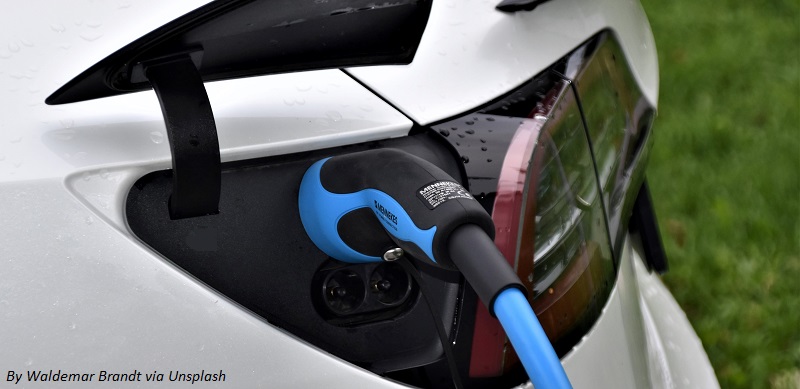Any road to change comes with a few speed bumps. North Carolinians interested in switching to electric vehicles have plenty of questions: How many miles will a car go on one charge? How do I charge my vehicle at home? How will charging needs affect my road trips?
The questions may be even more acute for people who live in or travel through rural areas, where EV stations are far apart. These hesitations yield real consequences and slow the growth of zero-emission vehicle (ZEV) use.
Governor Cooper’s Executive Order 246 ups the ante on North Carolina’s electric vehicle goals. It calls for an increase in registered ZEVs to at least 1.25 million by 2030, and aims for 50 percent of new vehicle sales to be ZEVs within that same time frame.
 The North Carolina Department of Transportation (NC DOT) is developing a Clean Transportation Plan that will build on the existing state ZEV Plan to reduce transportation emissions and encourage ZEV adoption.
The North Carolina Department of Transportation (NC DOT) is developing a Clean Transportation Plan that will build on the existing state ZEV Plan to reduce transportation emissions and encourage ZEV adoption.
Though North Carolina is growing increasingly urban by population, more than 40 percent of North Carolinians still live in unincorporated, rural areas. More than 4.6 million state residents live in regions with less than 250 people per square mile, spread across 78 of North Carolina’s 100 counties.
Nationwide, rural communities and regions have extremely low ZEV adoption rates, somewhere between zero and half a percent. Given that rural drivers tend to have the longest commutes and spend the most money on fuel and maintenance, they stand to significantly benefit from long term ZEV use.
And regardless of rural or urban status, it's important for everyone to benefit from the shift to a cleaner economy. Climate change affects people everywhere and rural North Carolinians - especially in the state's eastern counties - may be the hardest hit.
So how can we make clean transportation more accessible for all, including our rural neighbors?
On a state level, North Carolina continues to award funds from the Volkswagen settlement to build out a ZEV charging network. Rural counties have received and continue to receive, at minimum, 32 percent of the funding available for charging infrastructure. In addition, electric cooperatives in some rural areas of the state have received thousands of rebate dollars from the state Department of Environmental Quality (DEQ) to build out a statewide charging network.
But now rural charging will also receive assistance on a national scale. The Federal Bipartisan Infrastructure Law will provide $7.5 billion nationwide over the next five years to expand ZEV infrastructure and develop a network of 500,000 charging stations. North Carolina alone will receive $109 million to start, and may also apply for $2.5 billion in additional charging grants.
In early February, the U.S. Department of Transportation released a guide to ensure that rural communities get their fair share of opportunity. Charging Forward: A Toolkit for Planning and Funding Rural Electric Mobility Infrastructure is intended to connect towns, small businesses, planning agencies, and community stakeholders with the people and funds necessary to expand ZEV charging.
The toolkit starts with basic information: What are the different types of EVs and how do they work? How, and how fast, do charging stations work? Where can I look for examples of EV success? From there, stakeholders can:
- Investigate the benefits, challenges, and opportunities to overcome the obstacles of rural vehicle electrification;
- Connect with strategic partners for projects;
- Learn how to plan infrastructure;
- Read about relevant regulations;
- Explore a comprehensive list of rural infrastructure financing options; and
- Access an annotated list of resources including planning software, calculators, datasets, maps, and other educational guidance.
The N.C. Sierra Club applauds the Biden administration’s efforts to expand EV infrastructure. We encourage rural governments, businesses, community organizations, and other stakeholders to utilize all available resources for EV planning.
And we encourage Sierrans and all climate activists - whether or not you own an EV - to encourage your local government leaders to share this information so that your town or county can take advantage of new funding opportunities.